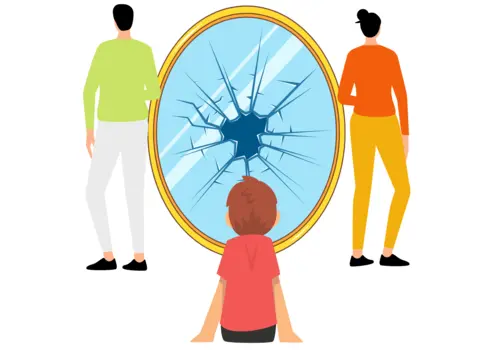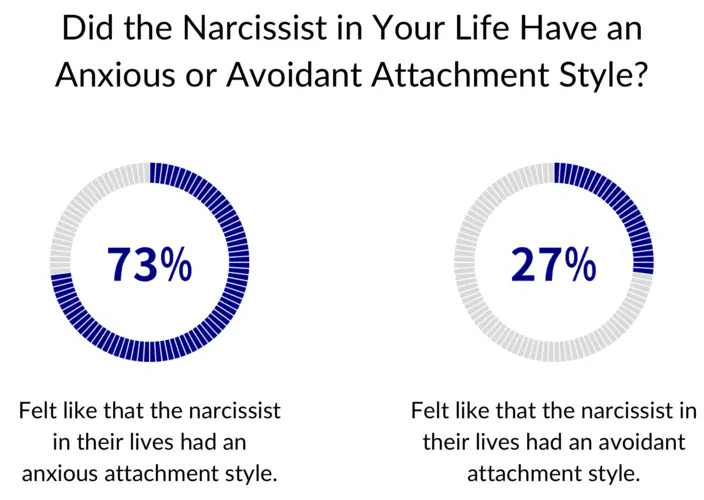Without the correct information, it can be really difficult for victims of narcissistic abuse to accept the fact that the narcissist in their life is nothing more than a manipulative abuser. It is hard to let go of the wish for things to be different which is why many victims of narcissistic abuse wonder if it is possible to have a healthy relationship with a narcissist in their life.
It is impossible to have a healthy relationship with a narcissist because healthy relationships require honesty, trust, respect, compromises, healthy boundaries, support, and mutuality, which are all unattainable by a narcissist because of their severely corrupted perception of what a healthy relationship is.
The guilt and shame that victims often feel at the mere thought of accepting this harsh truth can keep them trapped within the abuse cycle indefinitely so it is really important that they grasp a deeper understanding of why it is impossible to have a healthy relationship with a narcissist.
Why Is It Impossible to Have a Healthy Relationship With a Narcissist?
It is widely believed that narcissism originates from an unhealthy/abusive childhood where the primary caregivers are unavailable, unresponsive, and inconsistent. This type of environment prohibits the child from developing a realistic sense of self that would support healthy cognitive development. This is because unavailable, unresponsive, and inconsistent primary caregivers are incapable of using parental mirroring.
The term “parental mirroring” is a term used to describe how primary caregivers reflect or “mirror” the emotions, feelings, thoughts, and needs of their child.

Those who grow up with primary caregivers who consistently use parental mirroring are more likely to have a realistic sense of self and an emotional maturity that supports a healthy cognitive development.
There’s a lot more really important information about this in our article How Are Narcissists Made but there are two severe consequences for children who don’t have their thoughts, emotions, feelings, and needs mirrored because of an unavailable, unresponsive, and inconsistent primary that has a direct correlation with a narcissist’s inability to have a healthy relationship.
Narcissist’s Can’t Have a Healthy Relationship Because They Have Anxious Attachment Styles
In the 1950’s a psychiatrist named John Bowlby and a psychologist named Mary Ainsworth introduced the Attachment Theory which focuses on the relationships we have with our primary caregivers as infants.
Their work focused on the responses infants have when separated from their primary caregivers which revealed three attachment styles: secure attachment, anxious attachment, and avoidant attachment.
A secure attachment style is developed through available, responsive, and consistent primary caregivers who mirror their infant’s thoughts, emotions, feelings, and needs. An infant with a secure attachment style would be sad when they are physically or emotionally separated from their primary caregiver but quickly soothed upon their return.
Anxious attachment style and avoidant attachment style are developed through unavailable, unresponsive, and inconsistent primary caregivers who can’t mirror their infant’s thoughts, emotions, feelings, and needs.
Infants who have anxious attachment styles are very upset when they’re physically or emotionally separated from the primary caregivers and are caught between wanting to be soothed and wanting to punish their primary caregiver upon their return.

Infants who have avoidant attachment styles are very upset when they’re physically or emotionally separated from their primary caregivers and actively avoid the primary caregiver upon their return.
In recent years the work of Cindy Hazan, PhD, has suggested the attachment styles laid out by Bowlby and Ainsworth in the Attachment Theory also apply in our adult relationships and her work has been connected with narcissism because of characteristics of adults with anxious attachment styles.
These adults have a fear of rejection and abandonment, constantly need validation, admiration, and reassurance, are frustrated when their needs aren’t met, and have a lot of insecurities.
Narcissists do have all of those characteristics but if this belief is true and narcissists do have anxious attachment styles, it would suggests that they’re very upset when they’re physically or emotionally separated from the victim and are caught between wanting to be soothed and wanting to punish their victim upon their return.
To find out, we conducted a study among 205 survivors of narcissistic abuse (romantic relationships only) where we defined the attachment styles as we did above and asked them if they recognize any of the attachment styles from their own experiences with a narcissist and this is what we found:

We found this study fascinating but the important piece of information to walk away with is that an anxious attachment style, on top of all of the other emotional inadequacies one gets from an unhealthy/abusive childhood, prohibits narcissists from having key characteristics of a healthy relationship like trust, healthy boundaries, and a willingness to make difficult compromises.
“My narcissistic ex and I never spent the holidays together because he didn’t like my family and my family HATED him. I hated being separated because it would always start a huge fight between us. He would be very passive aggressive through triangulation and when we would reunite he would be very cold and distance but get really angry if I didn’t throw all of my attention at him.”-Emilia
Narcissists Can’t Have Healthy Relationships Because Their Emotional Inadequacies Makes Them Prone to Narcissistic Rage
The level of neglect that narcissists experience in their childhood forces them to search their external environment for the validation, admiration, and reassurance that their unavailable, unresponsive, and inconsistent primary caregivers can’t help them find within themselves.
For example, a narcissist might’ve learned that they could get the validation, admiration, and reassurance they need from their primary caregiver when they do really well in activities that the caregiver values but is casted aside whenever they bring up their thoughts, emotions, feelings, and needs.
This teaches them that their true identity, that is composed of all of these emotions, prohibits them from being validated, admired, and reassured.
This causes them to develop a deeply rooted fear and hatred for their true identity but because their emotional inadequacies make them incapable of regulating these intense negative emotions they have about themselves, they’re forced to create a falsified identity that they can use to suppress the negative emotions they have from their true identity instead.
To build this falsified identity, narcissists look towards society’s values to create an identity they can be confident will be accepted by others.

Unfortunately, their emotional immaturity makes them incapable of looking past society’s superficial exterior which causes them to gravitate towards very materialistic, superficial, and trivial aspects of life when building their falsified identity so they remain emotionally unstable in adulthood.
Narcissists are like a ticking time bomb. They have all of these uncontrollable negative emotions suppressed behind their falsified identity waiting to explode and the only way they can prevent that from happening is through the validation, admiration, and reassurance of others which is also known as narcissistic supply.
Sadly, narcissistic supply is not enough to keep them emotionally stable. You see, the negative emotions they have suppressed within are incredibly powerful. It’s almost like they have a sun-like gravitational pull that is just chipping away at their falsified identity making it extremely weak.
When they experience something that contradicts their identity, like someone holding them accountable for their behavior, it punches a hole the size of a crater in their falsified identity allowing all of their suppressed negative emotions to rush to the surface.
When this happens their emotional immaturity makes it so that the only way they’re able to repair their falsified identity and suppress the negative emotions again is through narcissistic rage.
The need for revenge, for righting a wrong, for undoing a hurt by whatever means, and a deeply anchored, unrelenting compulsion in the pursuit of all these aims which gives no rest to those who have suffered a narcissistic injury – these other features which are characteristics for the phenomenon of narcissistic rage in all its forms and which sets it apart from other kinds of aggression. – Heinz Kohut
Through narcissistic rage they’re essentially able to project all of their negative emotions onto the person, animal, or thing that contradicts their identity just long enough to give them time to repair it.
What’s important to get away from this information is a clear understanding of how fragile and emotionally unstable narcissists are. It’s not a joke when we say the slightest amount of authenticity causes them to attack others in some way, shape, or form.
You can check out our article 15 of the Best Examples of Narcissistic Rage, What Happens During Narcissistic Rage (Survey With 100 Survivors), and What Happens When You Hurt a Narcissist’s Ego to grasp a comprehensive understanding of how explosive and unpredictable narcissistic rage is, but it is important that you walk away from this article with an understanding that narcissistic rage prohibits narcissists from being in healthy relationships.
The reason being that healthy relationships have arguments, disagreements, anger, feedback, criticism, and so on. It is dangerous to have a relationship with someone who has explosive, and often violent, responses to those types of situations.
What Should You Take Away From This Article?
Generally speaking, people who have healthy relationships are comfortable with their vulnerabilities and insecurities, they are empathic, compassionate, and thoughtful, they have a realistic sense of self, and they’re capable of putting the needs of others ahead of their own.
This level of emotional security is unattainable for narcissist because of their anxious attachment styles and their proneness to narcissistic rage because of how emotionally inadequate their unhealthy/abusive upbringing left them.
If you’re lucky enough, you’ll be able to cut ties with the narcissist in your life and move on with you life without looking back. Unfortunately, there isn’t much luck in the narcissistic realm. Leaving the narcissist takes time and hard work.
We strongly recommend that you seek out a qualified professional to help you through this process but in the meantime check out our guide, Living With a Narcissist When Leaving Isn’t an Option for helpful tips to survive the abuse.
About the Author

Hey, I’m Elijah.
I experienced narcissistic abuse for three years.
I create these articles to help you understand and validate your experiences.
Thank you for reading, and remember, healing is possible even when it feels impossible.
References:
Hazan, Cindy, and Phillip Shaver. “Romantic love conceptualized as an attachment process.” Interpersonal Development. Routledge, 2017. 283-296.
Bretherton, Inge. “The origins of attachment theory: John Bowlby and Mary Ainsworth.” Developmental psychology 28.5 (1992): 759.
